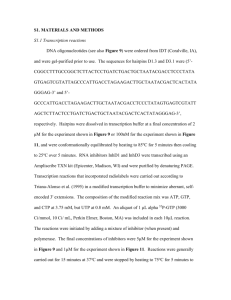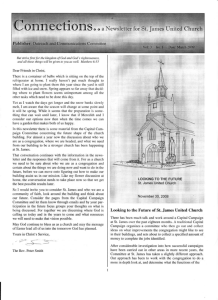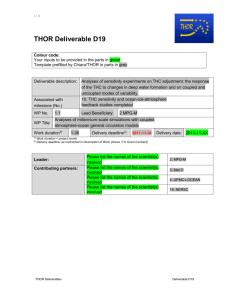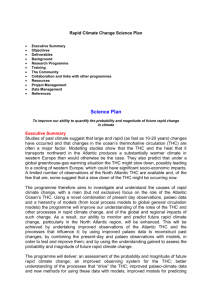Assignment #1 - Earth System Modelling Group
advertisement
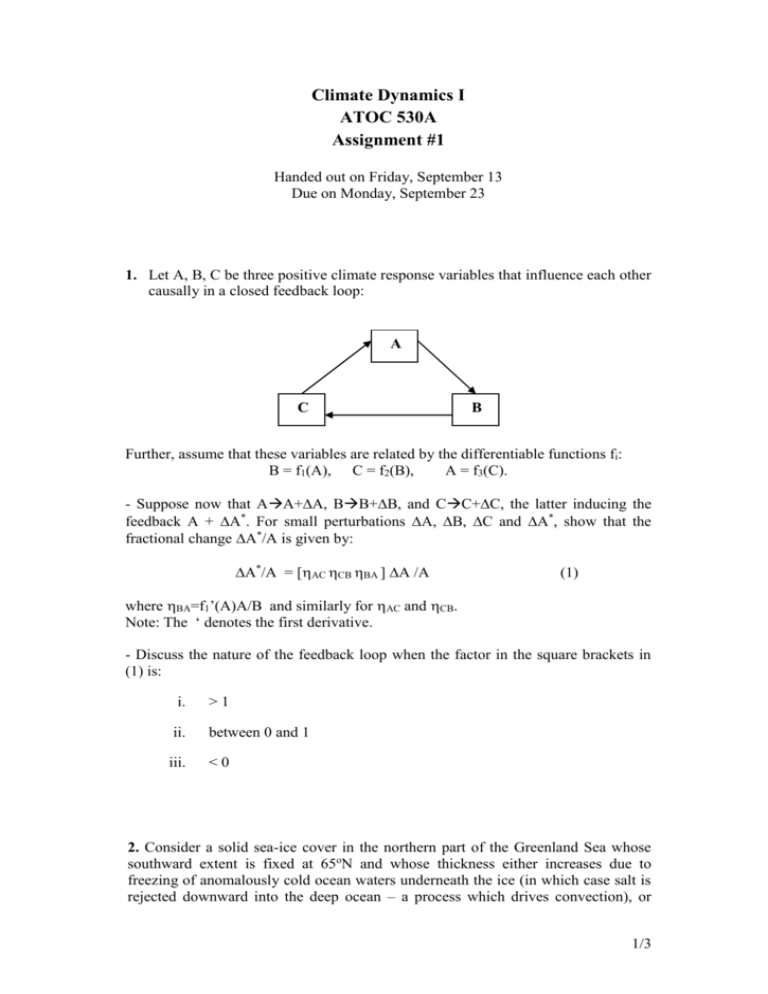
Climate Dynamics I ATOC 530A Assignment #1 Handed out on Friday, September 13 Due on Monday, September 23 1. Let A, B, C be three positive climate response variables that influence each other causally in a closed feedback loop: A C B Further, assume that these variables are related by the differentiable functions fi: B = f1(A), C = f2(B), A = f3(C). - Suppose now that AA+A, BB+B, and CC+C, the latter inducing the feedback A + A*. For small perturbations A, B, C and A*, show that the fractional change A*/A is given by: A*/A = [AC CB BA ] A /A (1) where BA=f1’(A)A/B and similarly for AC and CB. Note: The ‘ denotes the first derivative. - Discuss the nature of the feedback loop when the factor in the square brackets in (1) is: i. >1 ii. between 0 and 1 iii. <0 2. Consider a solid sea-ice cover in the northern part of the Greenland Sea whose southward extent is fixed at 65oN and whose thickness either increases due to freezing of anomalously cold ocean waters underneath the ice (in which case salt is rejected downward into the deep ocean – a process which drives convection), or 1/3 decreases due to melting because of anomalously warm water underneath (in which case the salinity under the ice decreases). Assume that the surface branch of the thermohaline circulation (THC) flows northward to a point just under the sea ice and then sinks downward and turns southward, to form the return deep flow. - Develop a feedback loop involving the following elements (given in random order): Sea-ice thickness Strength of the THC High-latitude upper ocean salinity High-latitude upper ocean temperature - Determine (and give the reasoning) whether or not your feedback loop leads to a climate cycle. 3. a) Assume that the Earth’s surface (land and oceans) absorbs about 50% of the incident solar radiation. This contrasts with the 70% figure used in the surface energy balance calculation done in class. Suppose in such a calculation we include a slab model for the atmosphere at temperature Ta, which radiates as a black body. Thus we can envision the following model for the Earth-atmosphere system, in which So=1368 Wm-2: Outgoing LW Radiation Ta4 Incident SW Radiation So/4 Atmosphere, Ta Ta4 0.5So/4 absorbed Te4 Earth, Te where is the Stefan-Boltzman constant. Note: By taking So/4 for the incident radiation, we have taken into account the Earth’s surface area and cross-sectional area used in class. By considering the energy balance for the atmosphere and the Earth’s surface, show that: Ta = ( 0.5 Fo / )1/4 and Te = ( Fo / )1/4, where Fo= So/4 b) Suppose the atmosphere contains two isothermal black body layers of temperature Ta1 (lower layer) and Ta2 (upper layer). Find Te, Ta1 and Ta2, and discuss the results. 2/3 4. Suppose the ocean temperature T associated with the global THC is given by the advection-diffusion equation: Tt + uTx + vTy + wTz = Kh ( Txx + Tyy ) + KvTzz, (2) where x, y are the usual eastward, westward coordinates, and z the vertical coordinate. Kh and Kv are the horizontal and vertical diffusion coefficients. Assuming a balance between the tendency (time-dependent, understand time derivative) and vertical diffusion terms in (2), determine the timescale for the diffusion of heat through the thermocline, which has a characteristic thickness of 2 km and a vertical diffusion coefficient of 10-4 m2s-1. 3/3








